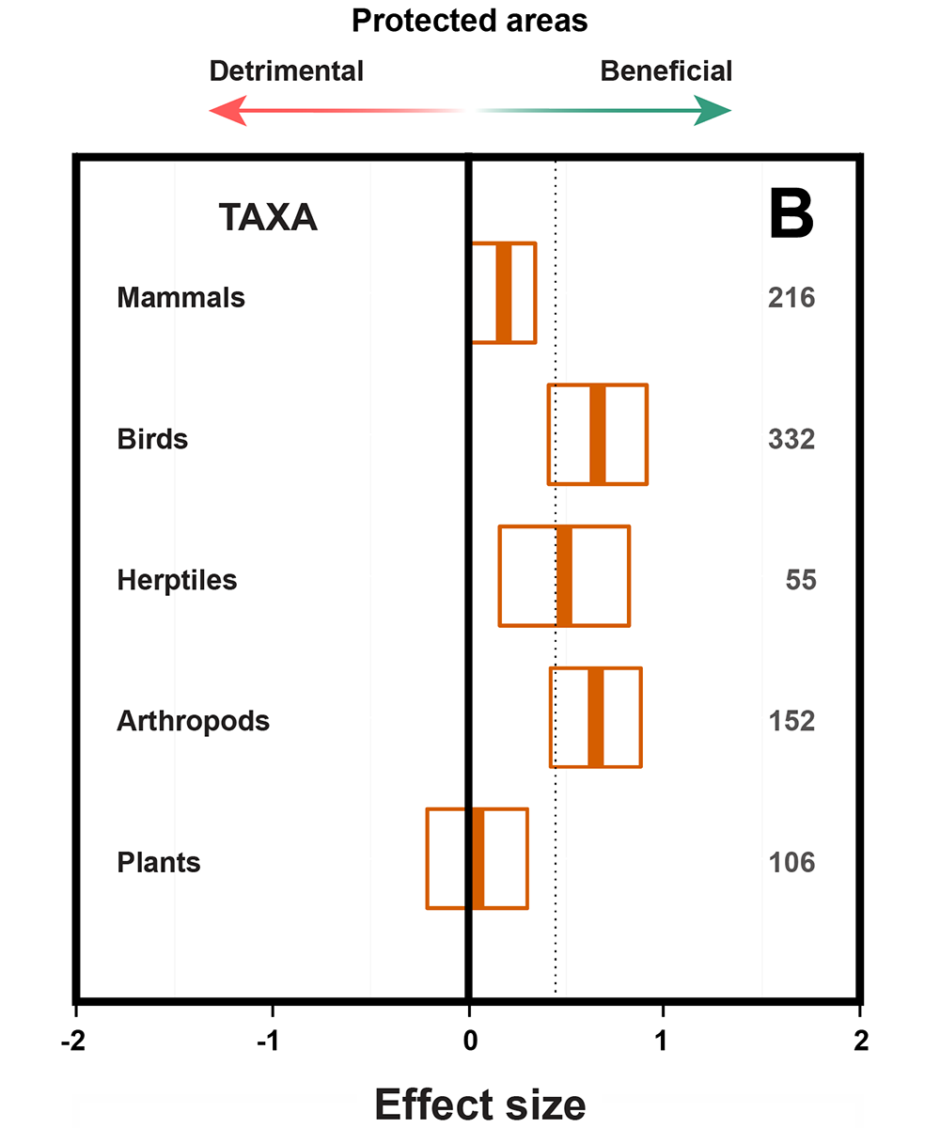3 September 2014 | By Bernard Coetzee
Protected areas conserve biodiversity and more action is needed to ensure safeguards are in place to protect these areas, were two of the main findings of a recent study by C·I·B researchers. Published in the scientific journal, PLOS ONE, researchers from the Centre for Invasion Biology, Monash University (Australia), and the University of Exeter (UK), used meta-analysis – combining results from different studies – to look at the past 30 years of research into protected areas, to determine whether they actually protect biodiversity.
Lead author Dr Bernard Coetzee said that protecting an area from human exploitation made common sense; however, up until now there had been little evidence to determine whether these conservation areas actually protected biodiversity. “Our work has now shown that protected areas have significant biodiversity benefits. In general, plant and animal populations are larger and more species are found inside rather than outside protected areas. In other words, protected areas are doing their job.”
The researchers said national parks, nature reserves and other ways of setting land aside to protect species had long been a key strategy in the conservation of biodiversity. However, there was a lot of controversy about the effectiveness of protected areas in conserving biodiversity. Some studies showed that fewer species and lower populations of key species were found inside, compared to outside reserves. Others showed just the opposite.
Dr Coetzee said the level of conflicting evidence was worrying as it made political decisions to protect new areas, often at significant cost, problematic. This research shows that protecting areas does work to conserve biodiversity, and it should remain a key strategy for conservation going forward, but we need more action to ensure increased coverage and better safeguards for their long term maintenance.
“This research means that protecting areas and spending hard-contested budgets on their maintenance are worthwhile for all governments. It also shows that achieving the Convention on Biodiversity’s 2020 Aichi Target 11 to increase protected area coverage to 17 per cent of land and inland water areas will really help protect biodiversity,” Dr Coetzee said.
Read the paper
For more information, contact Bernard Coetzee at bwtcoetzee@gmail.com

